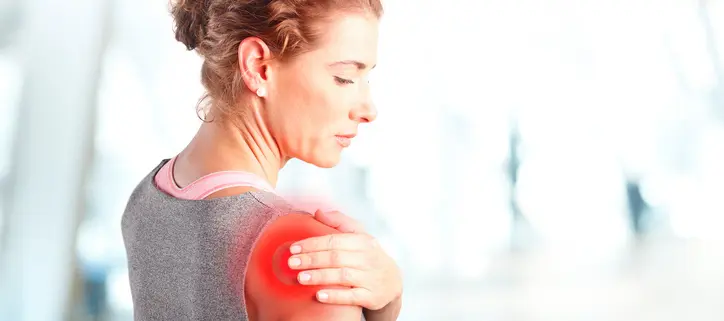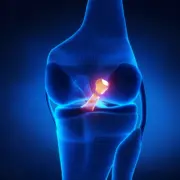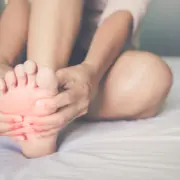What Does a Hurt Shoulder mean?
The shoulder is an elegant piece of machinery. It happens to have the greatest range of motion of any joint in the body. However, this large range of motion can cause the shoulder to become unstable, leading to joint problems and the site of multiple injuries. Your shoulder joint is composed of four joints, over 30 muscles and 6 major ligaments, and three bones: the clavicle (collarbone), the scapula (shoulder blade), and the humerus (upper arm bone). An edge of the scapula, called the acromion, forms the top of the shoulder.
Understanding how the different layers of the shoulder are built and connected can help someone understand how the shoulder works, how it can become injured, and how challenging recovery can be when injuries occur. As you can see, the shoulder is extremely complex. When you realize all the different ways and positions we use our hands and shoulders every day, it is easy to understand how they are highly vulnerable to injury and how hard daily life can be when the shoulder isn’t working well.
The most common type of shoulder injuries involves chronic shoulder pain, rotator cuff tears, total shoulder replacement, and shoulder impingement syndrome. Most problems in the shoulder involve the muscles, ligaments, and tendons, rather than the bones. Arthritis, injury, and repetitive motions such as those used during sports or work-related activities are leading causes of shoulder or elbow pain, stiffness, and restriction of movement.
However shoulder trouble happens, you should take it seriously. According to the American Academy of Orthopaedic Surgeons, too many people try to “play through the pain,” often turning a minor annoyance into a serious injury. If your shoulder feels stiff and you can’t move your arm normally, or if your shoulder feels weak or ready to pop out of its joint, schedule an appointment with your doctor or an orthopedic specialist. If the pain is intense or you cannot move your arm at all, call your doctor right away.
Here’s a rundown of the most common types of shoulder injuries:
Dislocated shoulder:
When the head of your upper-arm bone (the humerus) slips partially or completely out of the shoulder joint, you have a dislocated shoulder. This injury can happen any number of ways, from pitching a baseball to falling and landing hard on your shoulder. In any case, the injury is impossible to ignore. Your arm will feel like it’s hanging loose, and the pain will be intense. Dislocations call for immediate medical help. A doctor or other medical professional can push the arm bone back into the shoulder joint, providing dramatic and immediate pain relief. It’s not a good idea to try and pop it back in yourself, as you could easily injure yourself further.
Your shoulder problems aren’t over just because your arm is back in place. You may have to wear a sling for several weeks to rest and protect the joint. You may also have to ice the shoulder three or four times a day to reduce pain and swelling. After the swelling goes down, you can start daily exercises to strengthen your shoulder and reduce the risk of further injuries.
Separated shoulder:
A separated shoulder isn’t the same as a dislocated shoulder, but it can be just as painful. If you have a separated shoulder, the ligaments connecting your shoulder blade to your collarbone have become either strained or torn. Your shoulder will feel loose, and your arm may feel weak or even numb. The pain in your shoulder can be intense, especially if the ligaments are torn. If you only have a mild strain, you may feel moderate pain when you throw a ball or lift your arm.
Injured rotator cuff:
The “rotator cuff” is the collective name for a group of muscles and tendons that connect your upper arm bone to your shoulder blade. The rotator cuff is a vital part of the shoulder. It’s also prone to injury. If you injure or overwork your shoulder by repeatedly throwing a ball or lifting heavy objects, the tendons in the rotator cuff can become inflamed, a condition called tendinitis. In more extreme cases, the tendons and muscles in the rotator cuff can actually tear.
Injury Prevention and treatment:
To avoid injuries to the shoulder, start weightlifting sessions with a brief cardiovascular warm-up, to loosen muscles and joints. Make sure to stretch the upper body after lifting weights to prevent tight muscles and ligaments that are vulnerable to tears and sprains.
You can also prevent future injuries with weight training to strengthen the muscles that connect to your shoulders. Dips and push-ups are good ways to strengthen the whole shoulder girdle. Even abdominal exercises can help to prevent shoulder injuries. Whether you’re pitching a baseball or reaching into a closet, a strong abdominal core supports the torso, providing more overall control.
If your injury is mild or severe, your doctor will recommend daily exercises to start once you’ve recovered. These will help to strengthen your shoulder and prevent future problems.
To find out what is causing your shoulder pain, call Colorado Center of Orthopaedic Excellence at (719) 623-1050 to request an appointment.







